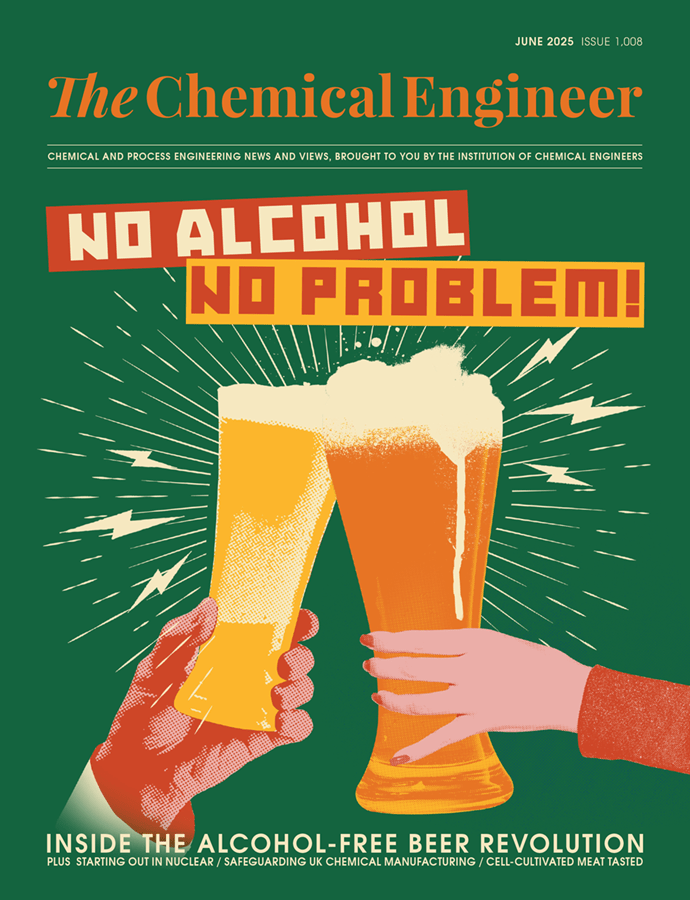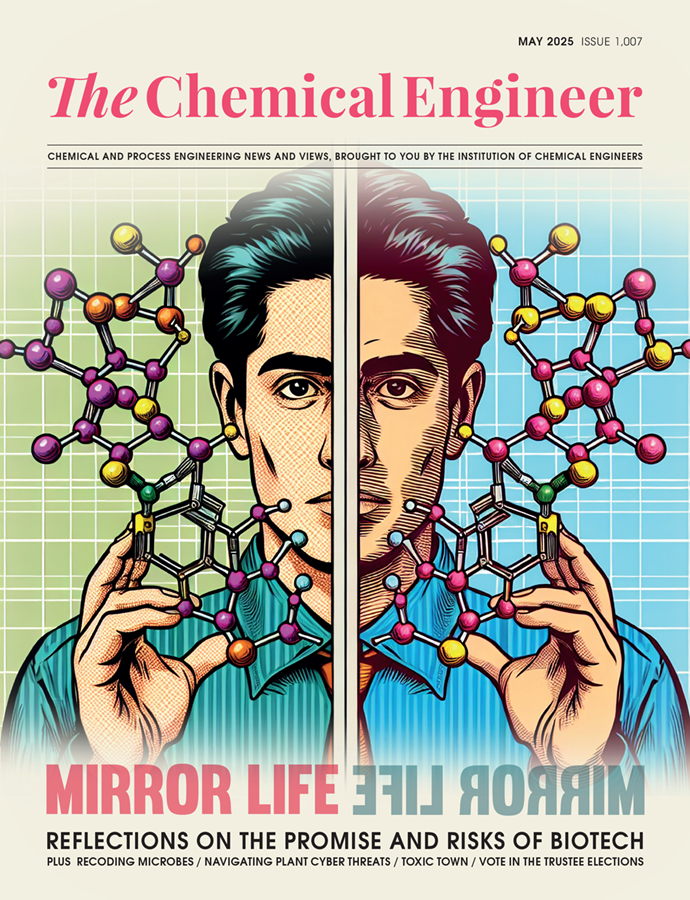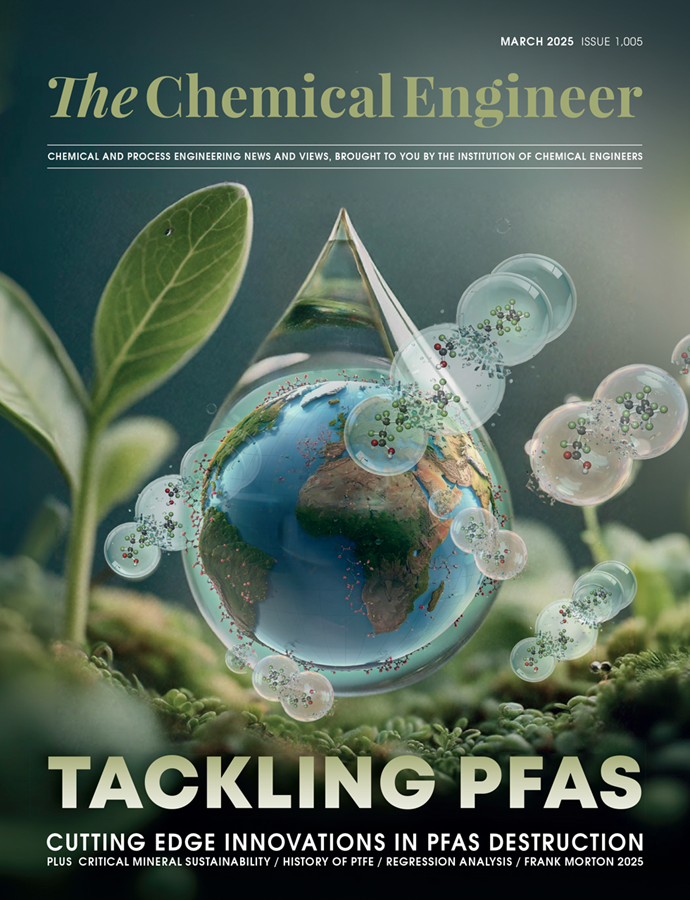Practical Process Control Part 19: Split-ranging
Myke King explains the history of split-ranging and looks at more effective alternatives
Quick read
- Split-ranging and Dual-acting Valves: Split-ranging allows a single controller to sequentially operate multiple valves, but dual-acting valves, which move simultaneously, can provide more precise control in certain applications
- Tuning Challenges and Solutions: Split-ranging can complicate tuning due to differences in process dynamics. Using separate controllers for each valve can improve both tuning and operator understanding
- Avoiding Overlap and Deadband: Overlap and deadband in valve calibration can cause instability or inefficiency, but these issues can be mitigated by using dual controllers and careful calibration
FIGURE 1 shows a common application of split-ranging. Under normal conditions, the column pressure is controlled by manipulating the condenser duty – in this case the flow of cooling water. Should incondensable components build up, so that the pressure controller fully opens the coolant valve, it will begin to manipulate the flow of vapour leaving the overhead drum. This sequential operation of the two manipulated variables is achieved by applying split-ranging.

Dual-acting valves
Control valve positioners are generally calibrated to travel over their full range as the controller output varies from 0 to 100%. However, this calibration is configurable. So, while we would often require the valve to move from fully shut to fully open, many other options are possible. For example, we might require the valve to close as the controller output increases. Figure 2 shows two potential schemes for controlling the temperature leaving a product cooler.

The first relies on a single, conventionally calibrated, control valve in the bypass. Should the product temperature be too low, the controller will open the bypass valve. However, this may not offer a sufficient range of operation. Even with the bypass fully open, some product will pass through the cooler. By adopting the second scheme, as the controller opens the bypass valve A, it simultaneously closes valve B in the line through the condenser. This is achieved by calibrating the valve positioners as shown in Figure 3. While drawn in the same way as a split-range scheme, because the valves move simultaneously, they are described as dual-acting.

History
Figure 4 shows how the valve positioners would be calibrated for our distillation example. The controller output range of 0 to 100% has been split into two ranges – one for each valve. Split-ranging, however, has some limitations. Before describing these, we should understand the history of the technique which was commonplace long before digital, or even electronic analog controllers. Taking our distillation example, a pneumatic controller would provide an output signal – typically ranged from 3 to 15 psi. This would be transmitted to the two valves via a shared pneumatic line. One valve would be calibrated to operate over the range 3–9 psi, the other over 9–15 psi. It therefore had the advantage of avoiding the costly installation of a second line. These days, control signals are electronic and transmitted through multicore cables or, more recently, via a digital network. The incremental cost of dedicated connections to each valve is now negligible. This also means that the valve positioners can be calibrated as full range, with the split-ranging done within the control system. However, rather than simply replicate the original pneumatic system, we can now engineer better solutions.

Choosing the split
A key disadvantage of split-ranging is that the column pressure controller will require very different tuning, depending on which valve it is manipulating. Split-ranging compels us to choose a single set of tuning constants. A potential solution is to move the split away from 50%. Figure 5 illustrates this. The blue line shows how column pressure varies as we move the coolant valve; the red line as we move the vapour valve. Data to plot these lines could come from the plant historian or from a test run. They illustrate the tuning problem. As the controller output crosses the current split at 50% the slope of the line, which is the process gain (Kp), changes by a factor of around 2. Using the formula below we can calculate that the split should be moved to 46.5%.


Two controllers
While this accommodates the change in process gain, it does not compensate for any significant change in deadtime or lag. Opening the coolant valve will have a much slower impact on pressure than opening the vapour valve. The heat capacity of the condenser will cause a significant lag in the response, whereas a change in vent flow will be almost instantaneous. Our choice of tuning constants would have to be some compromise that would probably perform poorly over the whole operating range.
Another area for improvement is the operator display. With split-ranging we need to explain why the cooling water valve indicates 100% open when controller output shows as 46.5%. Further, if the output increases to 60%, why does the vapour valve show as 25% open?
Both the tuning and display issues can be resolved by installing two separate pressure controllers, as shown in Figure 6. Importantly, though they share the same measurement, they can be individually tuned. To provide the sequential mechanism we choose a slightly higher setpoint for the controller manipulating the vapour valve.

Valve position control
There are other occasions in which we require a controller to manipulate two valves. The scheme shown in Figure 7 applies the same technique that we’ve developed for the column.

We require to operate over a range of flow that is too wide for a single control valve. Two differently sized valves provide the turndown we require. However, rather than allow the smaller valve to fully open, we want to use it to retain fine control of flow. We require both valves to move simultaneously, but with the larger valve opening so that the smaller valve remains in its controlling range. We achieve this with a valve position controller (VPC), shown as Figure 8.

Strictly, its measurement is not the actual valve position, but the output of the flow controller. We assume that the controller is working well, such that these are the same (although, these days, smart instrumentation might include the measured position). The flow controller manipulates the smaller valve, as normal, but its output is the measurement of a separate PID controller – the VPC. In this example, the operator has specified that, to keep within the operating range, the position of the smaller valve should be maintained at 50%. The VPC achieves this by adjusting the position of the larger valve. While the scheme will work well, it does require the total flow to be disturbed if the operator changes the valve position target. The VPC will change the larger flow, disturbing the total flow and requiring correction by the total flow controller. We can reduce its impact by tuning the VPC to correct slowly. Provided the small valve stays within range, it is not important to hold it tightly at 50%.
However, the design also assumes that a single flow instrument can cover the operating range. An improved scheme is shown as Figure 9. A change to the valve position target will change the setpoint of the larger flow controller, but the same change is sent to a bias algorithm which maintains a constant total flow by immediately making the opposite change to the setpoint of the smaller flow controller.

Deadband and overlap
Figure 10 shows the application of the split-range technique to nitrogen blanketing of a process vessel. Should the pressure be above setpoint, the controller output will increase. Because it is reverse-calibrated the nitrogen valve will initially close. Should the controller output exceed 30%, the valve venting to flare will begin opening. Both importing and venting gas are likely to have similar dynamics and so a single controller is probably adequate. The problem here lies within the valve calibration itself. Precisely calibrating valve positioners is a challenge. So, while we expect the nitrogen valve to be fully closed before we open the flare valve, this may not be the case.

As Figure 11 shows, there is a small overlap. The first issue is that, within this overlap, we have effectively doubled the process gain. This could cause instability but, more importantly, costly nitrogen is being needlessly flared. Valves can also be slightly miscalibrated so that there is a deadband at the switchover point. This again can cause an apparent tuning problem, because the process gain falls to zero within the deadband.

To ensure the valves operate over their whole range, some leeway is included in their calibration. It is common to allow a controller output to vary over the wider range of (say) -5 to 105% to ensure that the valve can be truly fully closed and fully opened. We can exploit this by following the same approach as that on the column. Installing two pressure controllers will then avoid overlap and deadband.
Next issue
Our next issue will be the first of four articles covering the development and use of inferential properties. Also known as soft sensors or virtual analysers, they are often key to the success of an advanced control project. Perhaps of all the control technologies, they benefit the most from the application of sound chemical engineering.
The topics featured in this series are covered in greater detail in Myke King's book, Process Control – A Practical Approach, published by Wiley in 2016.
This is the nineteenth in a series that provides practical process control advice on how to bolster your processes. To read more, visit the series hub at https://www.thechemicalengineer.com/tags/practical-process-control/
Disclaimer: This article is provided for guidance alone. Expert engineering advice should be sought before application.
Recent Editions
Catch up on the latest news, views and jobs from The Chemical Engineer. Below are the four latest issues. View a wider selection of the archive from within the Magazine section of this site.




